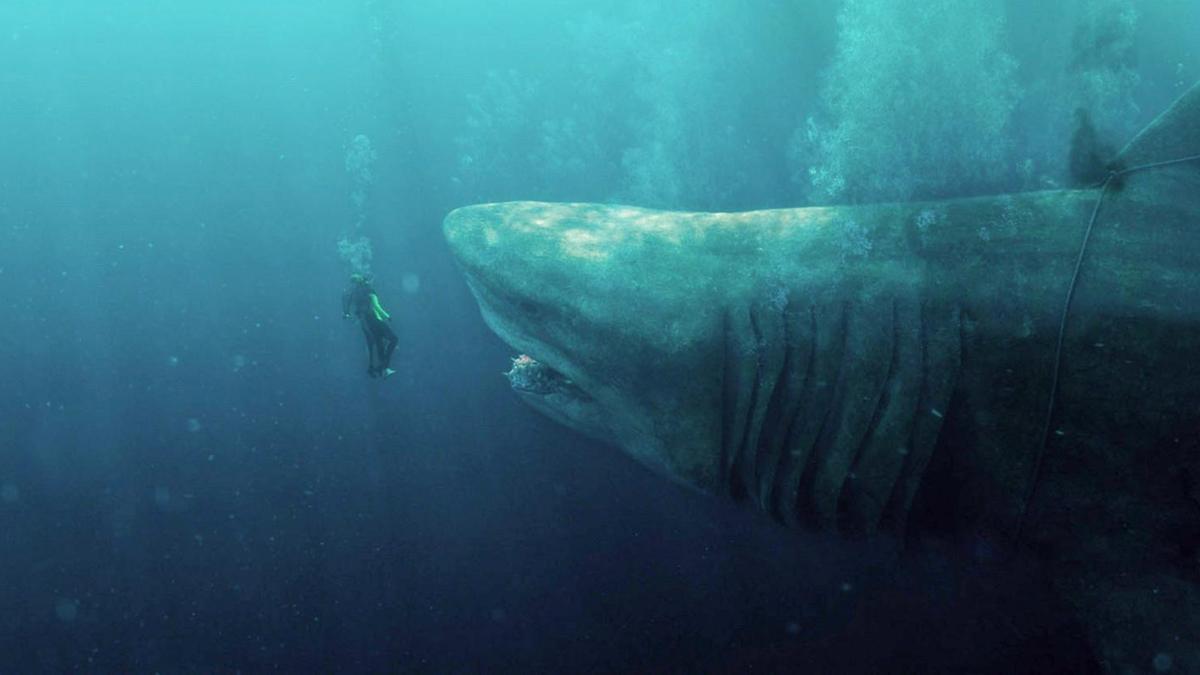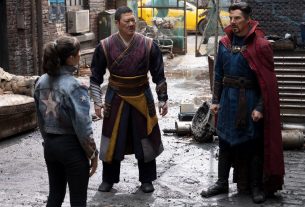

The new book TROLLS by Brian and Wendy Froud (Text copyright © 2012 Wendy Froud; Illustrations copyright © Brian Froud)
Cross Yoda with a fairy and what do you get? Brian and Wendy Froud. The fantasy artists and innovators are appearing this weekend at New York Comic Con, opening an art show in SoHo, and launching a new book of their collaborative art, titled Trolls.
I remember as a teenager getting a copy of Brian Froud and Alan Lee’s Faeries, published in 1978, as a gift from my parents. My folks knew I already spoke D&D and Tolkien, and I think to their mind the book of drawings would inspire me to dig deeper into the worlds of fantasy. They were right.
Alan Lee went on to become best known for illustrating Tolkien’s world, and worked as a lead visual designer for Peter Jackson’s Lord of the Rings and Hobbit movies.


The author’s copy of FAERIES, the seminal fantasy art book by Brian Froud and Alan Lee, first published in 1978 (Photo: Ethan Gilsdorf)
Meanwhile, Brian Froud has become one of the most pre-emiminent visualizers of the world of faerie and folktale. The winner of numerous awards, including the Hugo Award for Best Original Artwork, he worked with Jim Henson as conceptual designer on The Dark Crystal and Labyrinth, helping to innovate new designs, puppets and animatronics. Brian’s best-selling books include Lady Cottington’s Pressed Fairy Book (with Monty Python’s Terry Jones), Good Faeries / Bad Faeries, and The Faeries’ Oracle, among other titles. Brian’s last book was How to See Faeries, published by Abrams in 2011.
Brian’s wife, the American Wendy Froud, has become an accomplished doll artist, sculptor, and puppet maker in her own right. I bet you didn’t know this: She created creatures for The Dark Crystal and Labyrinth, and she was the fabricator of the Yoda puppet in The Empire Strikes Back, back when these special effects were made of latex and cloth, not pixels. A lifelong puppet maker, Wendy Froud also worked on The Muppet Show and The Muppet Movie.
The Frouds live in Devon, England, but I had a chance to ask them a few questions on the eve of their appearance this weekend at New York Comic Com. At the convention on Sunday, they’ll be celebrated at a panel entitled “Over 30 Years with Brian & Wendy Froud: Faeries, Goblins and Trolls” (followed by a book signing). They are also kicking off an art show at a gallery called AFA SoHo NYC Gallery, called “Trolls,” that runs now through December 30.
And if that weren’t enough, there’s the matter of their new book, Trolls, a handsome coffee table art book published by Abrams that is a kind of survey of the Frouds’ version of the troll world. What are trolls? Where do they come from? What do they look like? What stories do they tell and what stories are told about them? It’s all in their book.


An image from the interior of TROLLS (Text copyright © 2012 Wendy Froud; Illustrations copyright © Brian Froud)
GeekDad: Brian, to my mind, Fairies (your book with Alan Lee) was instrumental in helping visualize the world of fantasy — a world that today seems commonplace and accessible, thanks to the success of Tolkien, Harry Potter and World of Warcraft. Can you talk about what the climate was for “fanciful” pursuits like drawing in a fantasy mode back in the 1970s?
Brian Froud: I was one of the first living artists to have a book of fantasy illustration, The Land of Froud, published that was a recognition of not only my place as a contemporary illustrator but also placed in historical context with artists such as Rackham and Dulac. Within a few years there were other well known fantasy artists such as Roger Dean and Wayne Anderson working in the genre as well. The popularity of the Gnomes book led to Alan and I creating Faeries and everything seemed to take off from there, including Dark Crystal.
GD: Describe your creative process working together.
Wendy Froud: This book was a complete collaboration with both of us contributing to every aspect of its development. We realized rather early on that it was going to be so big and complicated that we would need to storyboard the whole thing. We pinned blank cards to corkboard for each page and filled them in as we either finished stories or pictures. Usually Brian drew the pictures first and I responded with words but occasionally I wrote and Brian illustrated afterward. We work from home so it was basically a 24 hour a day project!
GD: In this book, who did what? Who draws, who writes, who makes the digital designs?
BF: Wendy wrote the text and sculpted the 3D figures — we both made the troll objects — and Brian painted, drew, photographed and created the digital designs as well as designing the whole book.
GD: In Trolls, some of the images are hand-drawn (or appear to be), some seem like they might be real puppets, and others appear to be CG. How did you decide on that mix of visual styles?
BF: We knew from the beginning that we wanted to mix visual styles to create a more complete world view. There is indeed a mix of puppet figures, placed in photographed CG backgrounds, drawings, paintings and design work developed on the computer. We felt that the combination of mediums would create a rich and textured visual “landscape” — a unique experience for the reader and viewer — poetic both in text and image.
GD: Brian, as a traditional artist, and one who worked on “analog” special effects and designs for The Dark Crystal and Labyrinth, how do you feel about the way fantasy art and special effects have been subsumed by digital culture? What is lost when a puppet is digital, not a physical thing? What is gained?
BF: Puppets still have an immediacy and a sense of life that digital characters still don’t quite achieve yet — although I’m sure they will. The viewer instinctively can tell the difference between a physically made puppet and the rather alienating experience of purely digital creations. There is an “earthing” quality to puppets that is often really successful, however perhaps what digital characters can bring to this is transparency, lightness and more twiddly bits!
GD: How did you decide how to portray your trolls in this book? To my mind, many people think of trolls as huge, dumb and lumbering beasts. In this book, the trolls seem whimsical, fanciful, mischievous, more like shamans and magical creatures. Are there different “troll” traditions? What troll myths did you draw upon and/or what research did you do?
WF: Our trolls are essentially part of the Celtic/British landscape and tradition of where we live on Dartmoor. These are not the more familiar Scandinavian trolls, but very much our “local” trolls. They are many faceted creatures that embody the spirit and soul of the land, collecting tales and sharing them amongst themselves. They can be wise and serious, quick witted and canny — certainly shamans — but of course there are always lumbering, dim-witted trolls as well. We both read the Scandinavian troll legends and stories and we are both very familiar with Celtic tradition, archaeology of the British Isles and folk traditions throughout Europe.
GD: What is the essential difference between a fairy, a goblin and a troll?
BF: They are all part of the same “faerie” world although trolls are earthbound — literally creatures of earth and stone.
GD: Did either of you see the recent, 2012 film Norwegian Trollhunter, which depicted one version of a troll mythology, and if so, what did you think of it?
WF: We did recently see it — after we had finished the book — and enjoyed it. We do wish we had seen it with subtitles instead of the dubbed version.
GD: What is your relationship with Alan Lee (who has gone on to help the visual design of the Lord of the Rings and The Hobbit movies, as well as books? Will you and he collaborate on a project again?
BF: We are friends and live in the same village on Dartmoor — although Alan spends a great deal of his time in New Zealand now. We don’t have any plans to work together on projects in the future — although of course you never know.
GD: Wendy, you helped sculpt the Yoda puppet for Empire Strikes Back. Talk about that process — working with George Lucas and Frank Oz (the voice and performer of Yoda).
WF: When we started developing Yoda we had no idea that he would become such an iconic figure. It was of course very interesting to come in near the beginning of the project and sculpt this character, changing it every day as suggestions were made by Frank Oz, George Lucas, Jim Henson and others until the look that was “just right” was decided upon. Being part of the team that turned the character into a workable puppet and then also to be part of the puppeteering team was very satisfying. Taking one character from the creative beginning to the final appearance on screen is something that doesn’t happen very often.
GD: Brian, in your foreword to Trolls, you say, “The last conversation Jim Henson and I had before his death was about collaborating on another film. It was to be about trolls. This book is, in essence, the film we never got to make.” What was the film going to be? How far had you planned it?


An image of “the wisest troll” from TROLLS (Text copyright © 2012 Wendy Froud; Illustrations copyright © Brian Froud)
BF: We really had just begun to talk about it. A few story ideas were being tossed around but unfortunately we never had the chance to go further than that.
GD: Any other comments or thoughts?
Brian and Wendy Froud: We just want to say that we are both very proud of this book and hope it will reinstate trolls as well rounded and sensitive beings and more than just the bad things lurking under the bridge.
You can read more about the new book Trolls, and all the Froud’s projects, at worldoffroud.com.






